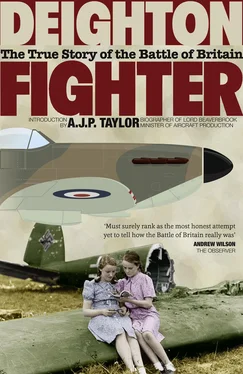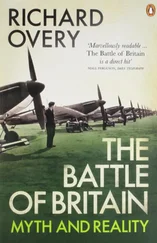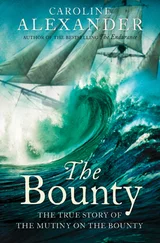It was while comparing this Daimler-Benz engine with the Rolls-Royce Merlin that I became interested in aero-engines and saw for the first time their prime importance in the entire history of aviation. From the Wright brothers right up to the present day, airframe designers have to wait upon engine manufacturers before completing their work on the drawing boards. I found it compelling from many points of view. The personal vendettas, stupidity, treachery and corruption in the contracts, the determination of governments and businessmen to distort progress made for a fascinating social history as well as a military one. It was a neglected aspect of aviation and I embarked upon a history of aero-engines; perhaps one day I will publish it.
Meanwhile, here is the story of the Battle of Britain – our Trafalgar – and I have told it with an overriding determination to stick to the truth. If it shatters some myths and flag-waving nonsense it is only to reveal a more inspiring truth of which we can be proud and grateful.
Len Deighton, 2013
Introduction CONTENTS Title Page Fighter The True Story of the Battle of Britain LEN DEIGHTON Cover Designer’s Note Illustrations Preface to the 2014 Edition Introduction by A. J. P. Taylor PART ONE Strategy PART TWO Air Chief Marshal Sir Hugh Dowding, Commander in Chief Fighter Command PART THREE Weapons: The Metal Monoplane and Radar PART FOUR Tactics PART FIVE The Results Acknowledgements Selected Bibliography Index About the Author Also By Len Deighton Copyright About the Publisher
by A. J. P. Taylor CONTENTS Title Page Fighter The True Story of the Battle of Britain LEN DEIGHTON Cover Designer’s Note Illustrations Preface to the 2014 Edition Introduction by A. J. P. Taylor PART ONE Strategy PART TWO Air Chief Marshal Sir Hugh Dowding, Commander in Chief Fighter Command PART THREE Weapons: The Metal Monoplane and Radar PART FOUR Tactics PART FIVE The Results Acknowledgements Selected Bibliography Index About the Author Also By Len Deighton Copyright About the Publisher
Bismarck once asked Count Helmuth von Moltke whether he could guarantee victory in the coming war against Austria. Moltke replied, ‘Nothing is certain in war.’ War is indeed full of surprises and the Second World War had many, from the German breakthrough at Sedan in May 1940 to the dropping of the two American bombs on Japanese towns in August 1945. No action, however, was as surprising and unexpected as the aerial combats between the Royal Air Force and the Luftwaffe in the summer of 1940. Imaginative novelists, and particularly H. G. Wells, had described future engagements between vast armadas of the air. Few of those who determined air strategy in practice believed that such forecasts had any reality.
The key to the story is that the air commanders before the Second World War had very little previous experience to draw on. The materials and methods of war are of course constantly changing. Generals acquire rifles, machine guns and tanks. Admirals acquire bigger battleships and submarines. But they have some idea from earlier wars of the problems that are likely to face them. The air commanders had no such resource. The war in the air of the First World War had been largely a matter of dog-fights between individual aircraft. The few bombing raids had caused terror and little effective damage. Those who determined air strategy after the war had to proceed by dogma alone, a dogma that was little more than guesswork.
The dogma was simple: ‘The bomber will always get through.’ General Giulio Douhet said this in Italy; Billy Mitchell said it in the United States. Both were detached theorists. It was more important that Lord Trenchard said it in England, for Trenchard was Chief of Air Staff for ten years, from 1919 to 1929. Trenchard was determined to have an independent air force, and the only way for it to be more than an auxiliary of the army and navy was to have a strategy of its own. This strategy was independent bombing. The air commanders practised this strategy successfully. The British bombed defenceless villages in Iraq; the Italians bombed defenceless villages in Abyssinia; the Germans bombed defenceless villages in Spain; the Japanese bombed defenceless cities in China.
But was there no defence? The air chiefs answered unanimously: none. The only answer was to possess an even stronger bomber force than the enemy with which to destroy his bases and his industrial resources. The British, thanks to Trenchard, accepted this doctrine wholeheartedly. They calculated the strength of the largest air force in Europe and made this their yardstick, just as British Admirals had made the German navy their yardstick before the First World War. In the early days the French air force provided the yardstick, though it is difficult to believe that there was ever a serious chance of a war between France and Great Britain. In the 1930s the German Luftwaffe became the obvious rival. The British Air Staff clamoured for more bombers and, when the RAF slipped behind, declared that Great Britain was in imminent danger. Everything, it seemed, turned on the bomber race.
In December 1937 there was a revolution in British air policy. It was sensational though little regarded. The year before, Sir Thomas Inskip had been made Minister for the Co-ordination of Defence. He was an unimpressive figure whose appointment had been dismissed as the most surprising since Caligula made his horse a consul. But Inskip had a clear lawyer’s mind. He recognised that the British were losing the bomber race with Germany. Then he proceeded to the striking conclusion that it was not necessary for them to win it. For while the Germans aimed at a short war and therefore wanted a knock-out blow, the British merely needed to survive until blockade and perhaps the aid of allies brought victory in a long war. In his own words, ‘The role of our Air Force is not an early knock-out blow … but to prevent the Germans from knocking us out.’
Inskip had also a practical argument. Previously it had been plausible and perhaps even reasonable to claim that there was no defence against bombers and that they would always get through. Now there were new assets on the British side. Their new fighters, especially the Spitfire, were faster and more formidable than any that had gone before and could challenge the German bombers. Radar was being developed by British scientists and with it the British fighters would know when the bombers were coming. Defence was possible after all. Of course this, too, was a dogma, not based on experience. In Inskip’s view it was worth trying.
He had a still more practical argument. Fighters cost less than bombers to build. Therefore more could be produced for the same money and the great British public, who understood nothing of the difference between fighters and bombers, would be the more impressed. This argument was decisive with the Cabinet, which accepted Inskip’s recommendation on 22 December 1937. The Air Marshals raged and Trenchard declared in the House of Lords that the decision ‘might well lose us the war’. But the revolution in British air policy had begun. Some of Inskip’s arguments, such as his reliance on blockade, were mistaken. But he deserves some credit as the man who made British victory in the Battle of Britain possible.
The second man who exercised decisive influence also arrived at his position in an almost accidental way. Sir Hugh Dowding was the senior member of the Air Council. He had every claim to become Chief of Air Staff in 1937. But he was a quiet, reserved man, obstinate in pressing his views and not a good mixer. He was pushed off to become head of Fighter Command, then regarded by the other Air Marshals as a second-rate post. Dowding considered the problem of fighter strategy in his cool, rational way. Far from him was any romantic idea of vast armadas contending in the skies or of dog-fights such as there had been in the First World War. The sole task of Fighter Command, as Dowding saw it, was the defence of Great Britain and this could be accomplished by defeating the German bombers. Without them the German fighters would be harmless. Dowding planned an economical campaign to husband his fighter force at all costs.
Читать дальше












